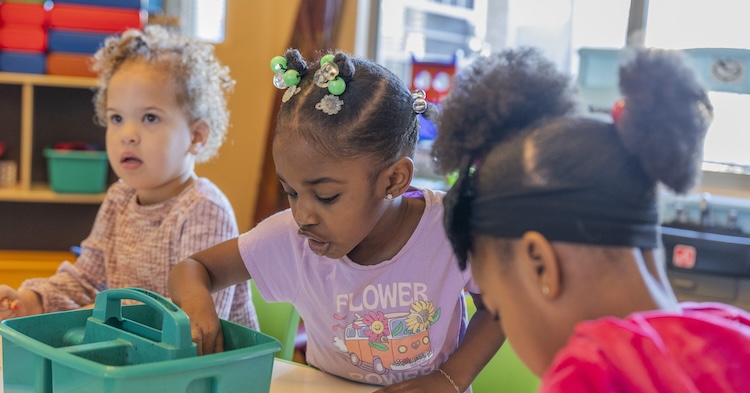As an early education leader, you know that a program’s structure can change everything. Not just for children, but for teachers and families too. From smaller groups and ratios to classroom transitions, each detail shapes the daily experience.
We recently connected with Mariaelena Rodriguez, the director of A New Leaf’s Phoenix Day, a Quality First participating program in the First Things First Phoenix South Region.
Rodriguez shared some of the changes she’s made to her program. By reducing group sizes and moving to yearly transitions, she’s seen a big difference for children, staff and families.
What changes did you make to your program’s group sizes and transitions?
“We intentionally reduced classroom capacity so children have more meaningful chances to engage and learn with their teachers. Smaller class sizes help children better understand routines and structure. They help teachers keep children’s interest and support deeper learning.
We also decided to limit classroom transitions to just once per year. Instead of moving classrooms based on birthdays, all children move up the first Monday of August. This helps children build strong, stable relationships with teachers and peers.”
What inspired you to make these changes?
“Our goal has always been to create a learning environment where children can grow and thrive while reaching important developmental milestones. We wanted to give children the space and freedom to explore, express themselves through play and to learn in ways that reflect their own interests and strengths. By offering a variety of interest areas and keeping class sizes smaller, children can move and explore more freely, with less crowding or competition for materials.”
How did you come up with the idea? Who helped?
“We did this with the support and guidance of our coaches. With our Quality First coach, Child Care Health Consultant, Inclusion Coach and Mental Health Consultant, we were able to engage in meaningful collaboration to strengthen our program.”
What impact have the changes, like moving to smaller groups, had on your program?
“Reducing group sizes had big impacts on teachers and staff, including fewer incident reports, fewer staff call-outs due to burnout and less need for overtime.
Teachers also responded positively to moving children just once per year. They said it gave them a chance to build stronger, lasting bonds with children and families.
We’ve also seen a boost in family engagement. Families are more involved in classrooms, volunteering and participating in activities.”
What advice would you give to another program considering these changes?
“Take a close look at classroom capacity numbers and align them realistically with the age of the children and the space.
For us, keeping children in smaller groups with the same teachers for a full year has been powerful. This consistency allows children to grow emotionally, socially and academically, while building strong bonds between teachers and families. Building these relationships has always been a cornerstone of our program and a key factor in our success.”
I was excited to share this vision with our teaching staff and to reassure them that we are here to support not only their professional growth but also the well-being of the children and families we serve. Our goal has always been to provide a high-quality, nurturing program that we can all be proud of—and these changes bring us even closer to that vision.”
Let’s keep the conversation going
What is one change you have made in your program or classroom that had a big impact? Share your ideas below and help inspire others.
